Confederate Memorial |
|
Dallas, Texas, U.S.A. |
|
Page 1 |
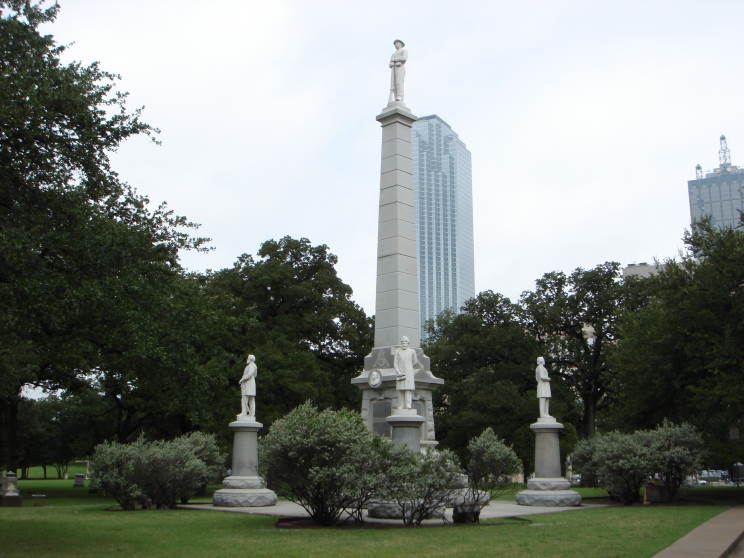 |
The Confederate Memorial in Dallas, Texas. Located in Pioneer Park, on the grounds of the Dallas Convention Center. The memorial was dedicated on June 25, 1896 by the Daughters of the Confederacy, Dallas Chapter No. 6. The memorial was designed and built by Frank Teich of San Antonio, Texas. The central pillar is 60 feet tall with a statue of a Confederate soldier atop. It is surrounded by statues of three Confederate generals and the President of the Confederate States of America, Jefferson Finis Davis. Originally located at Old City Park, the memorial was moved in 1961 for the construction of a freeway. It is the oldest outdoor sculpture in Dallas. |
July 25, 2020 This memorial has been removed as part of the historical cleansing which is taking place in the U.S.A. at the moment. There can be an argument made that memorials, such as this one, should be removed. This memorial appears to be a memorial to the Confederacy and its leaders, not to Confederate soldiers or war dead, which is a different subject. A memorial to the leaders of an insurrection, which tore the nation apart, seem to me to be out of the ordinary. A memorial to the individual soldier who died in the war however are appropriate in my view. Just remember, not every Confederate soldier fought because they believed in slavery. They fought for the south, because they were born in the south. Just as men born in the north fought for the Union because they were born in the north. Germans and Japanese fought for German and Japan because they were born there, just as American, Brits and Frenchmen fought for their respective countries. These difficult subjects cannot be understood or rectified through a 30 second soundbite on the news or a few characters on twitter. They need to be discussed by mature adults, not the screaming destructive mobs which seem to be in control of the argument. Michael W. Pocock Webmaster |
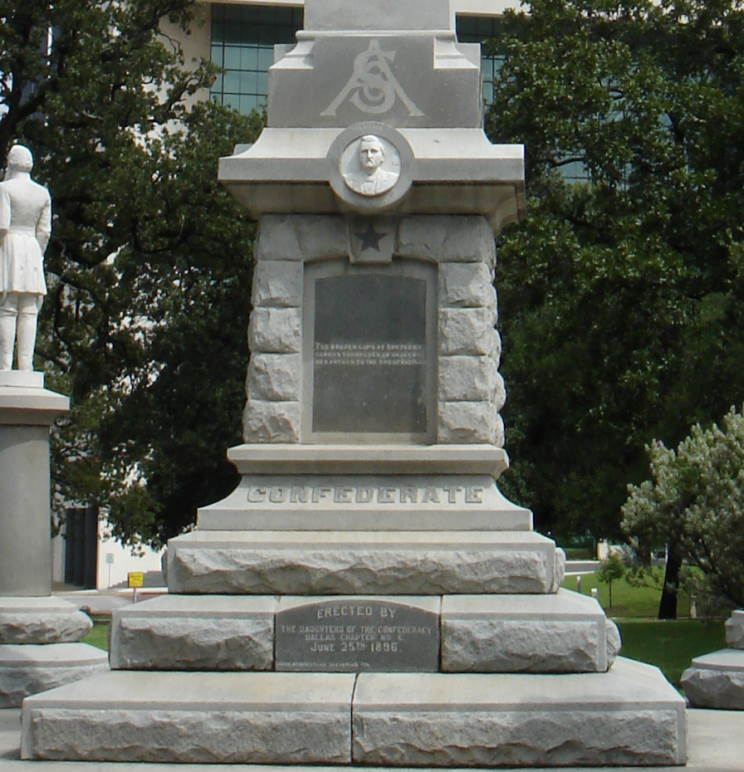 |
View of the front side of the Confederate Memorial. |
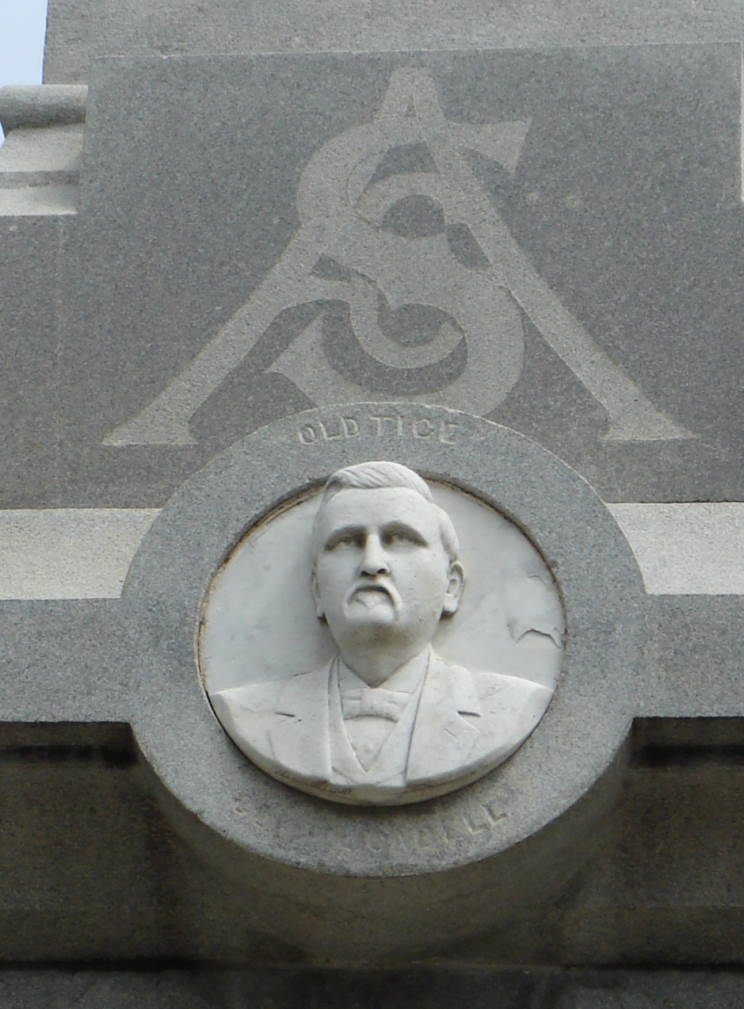 |
Brigadier General William Lewis Cabell, USA, CSA "Old Tice" (1827-1911) trained at the United States Military Academy (West Point) and was commissioned in the U.S. Army with the 7th Infantry. After the war he became a lawyer and later a three term mayor of Dallas, Texas. His grandson, Charles P. Cabell, was a General in the USAAF in World War II and later Deputy Director of the CIA. A second grandson, Earle Cabell, also served as mayor of Dallas, Texas. |
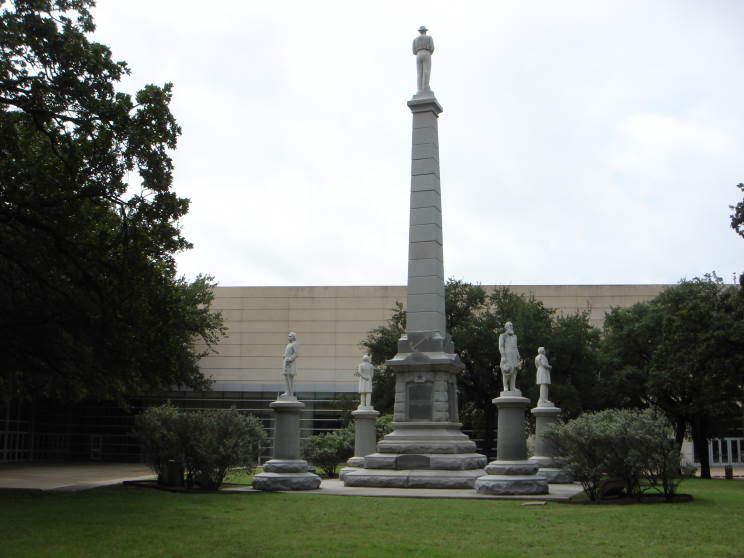 |
View of the back side of the Confederate Memorial. This memorial, like many others, is currently under threat by violent left wing groups and the current democrat mayor of Dallas who want it removed from city property. |
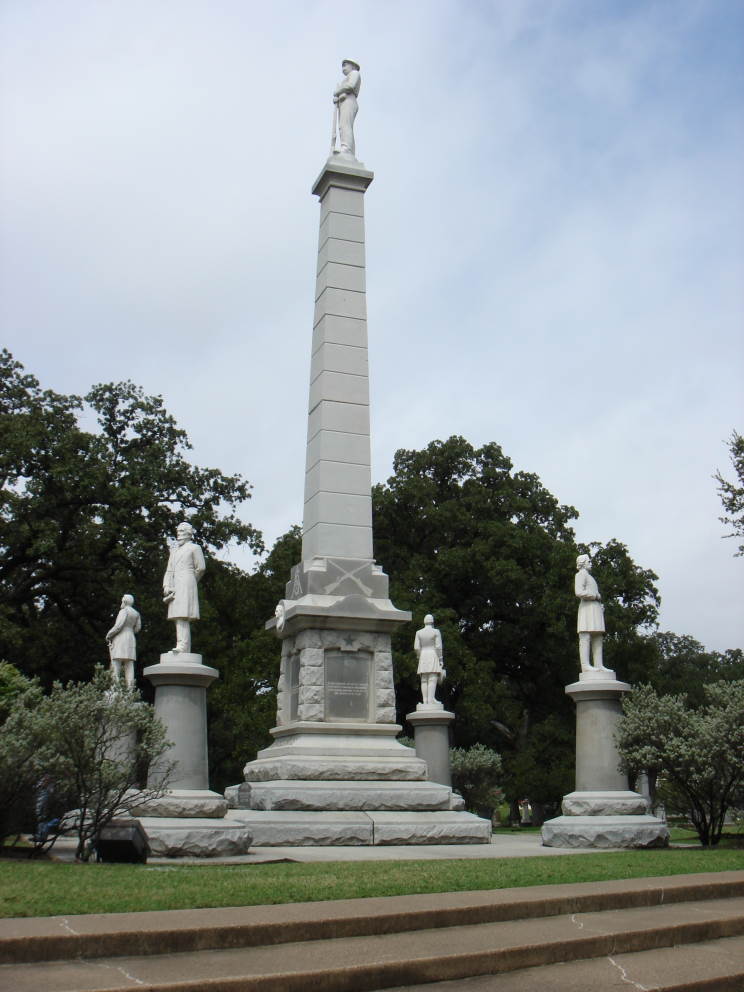 |
Another view of the Confederate Memorial. |
The statue of President of the Confederate States of America Jefferson Finis Davis (1808-1889). Formally the democrat senator from Mississippi and Secretary of War for the United States. Following the War Between the States, Davis was accused of treason and held in prison at Fort Monroe, Virginia. Davis was never convicted and released after two years. He finally came around to reconstruction and told his supporters to support the Union, but this took almost 20 years. |
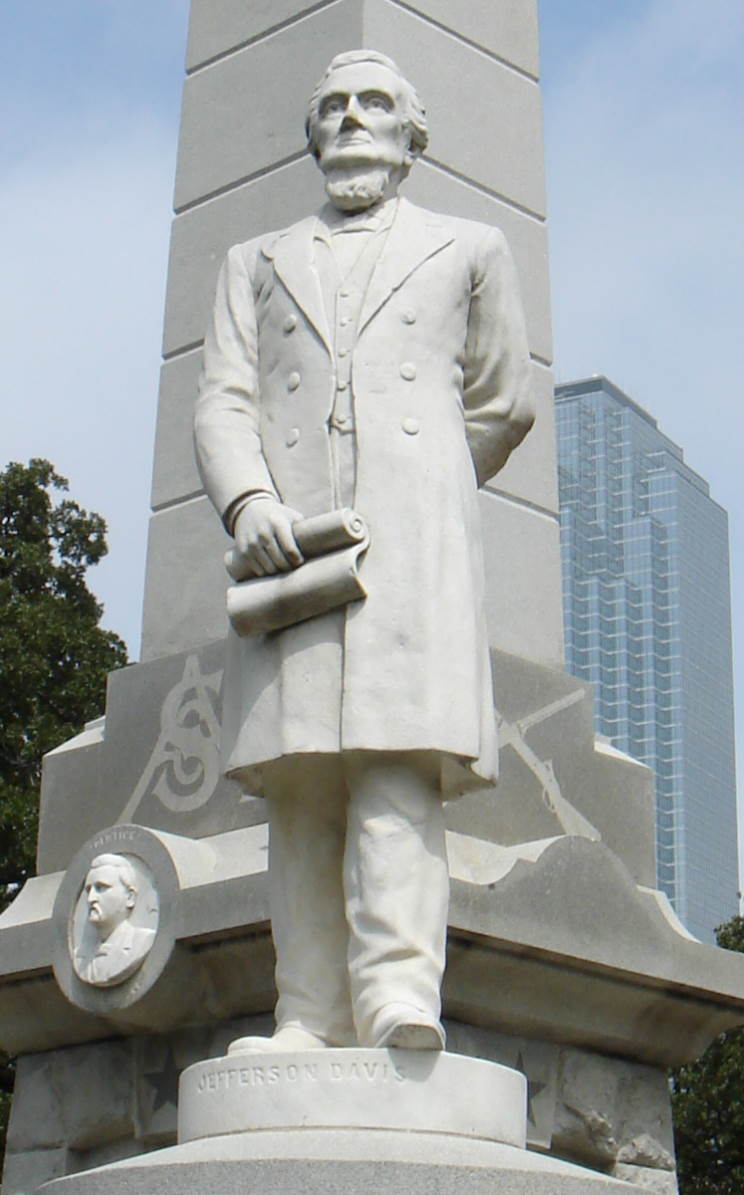 |
Close-up of the statue of Jefferson F. Davis. |
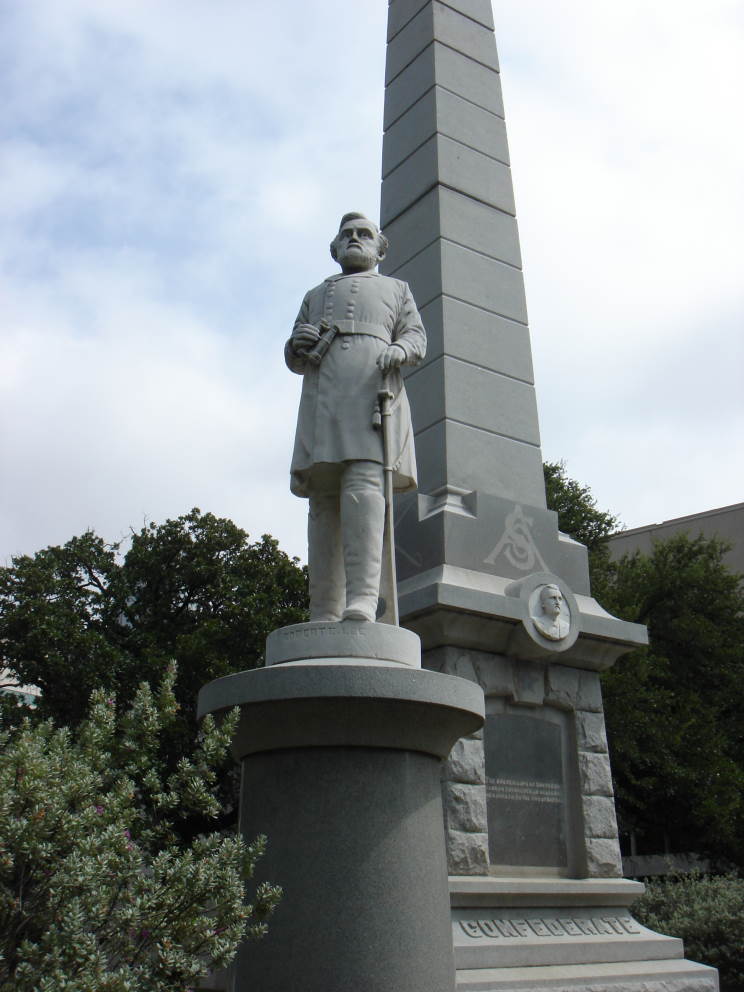 |
The statue of General Robert Edward Lee, USA, CSA (1807-1870). Trained at the United States Military Academy (West Point), Lee served in the U.S. Army for 32 years before joining the Confederacy. After the war Lee supported reconstruction, but opposed Republicans who wanted to give freed slaves voting rights and to take away voting rights of former Confederates. |
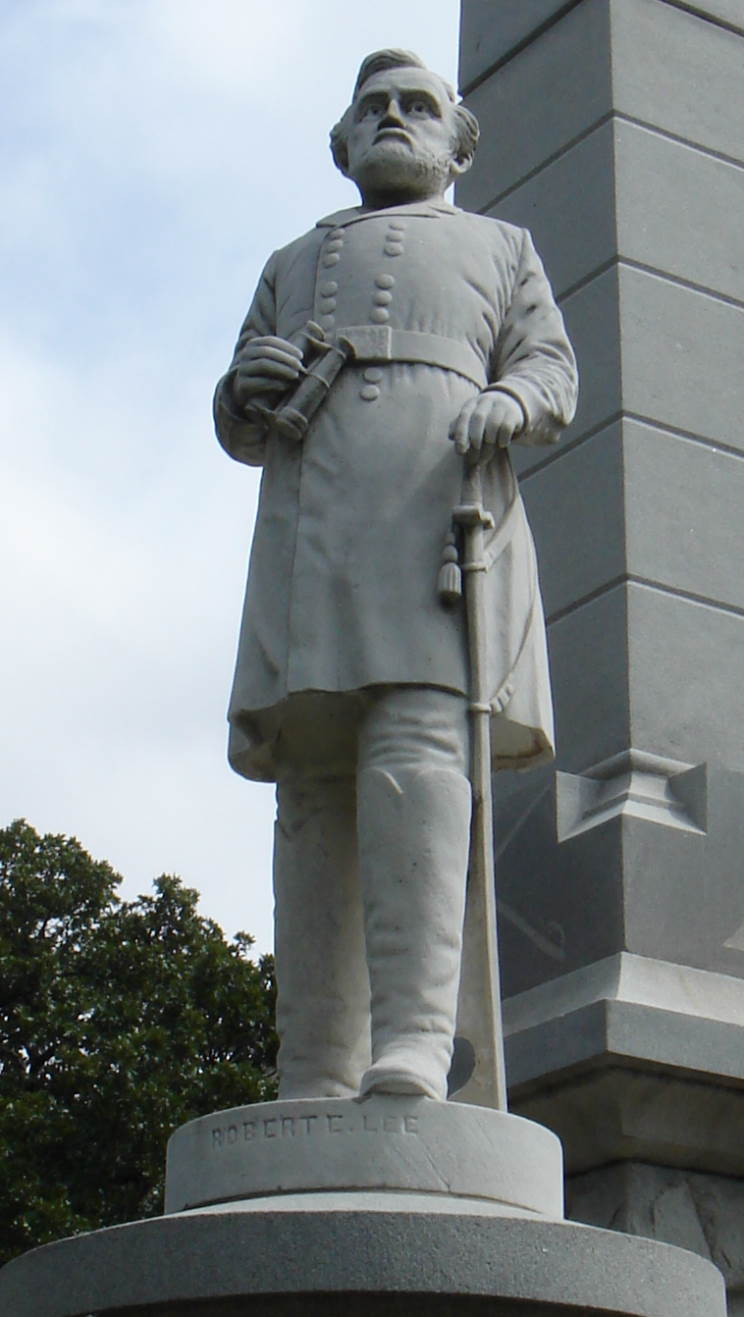 |
Close-up of the statue of General Robert E. Lee. |
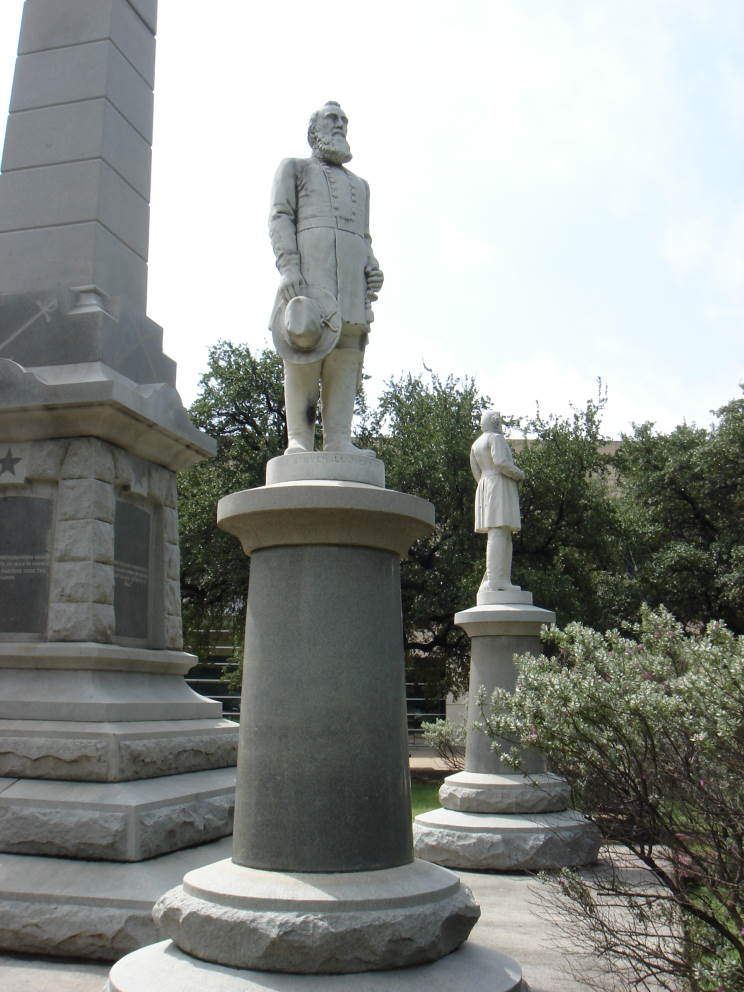 |
Statue of General Thomas Jonathan Jackson, USA, CSA "Stonewall Jackson" (1824-1863). Trained at the UNited States Military Academy (West Point) and served in the U.S. Army from 1851 until he joined the Confederacy. Jackson died of wounds received at the Battle of Chancellorville. |
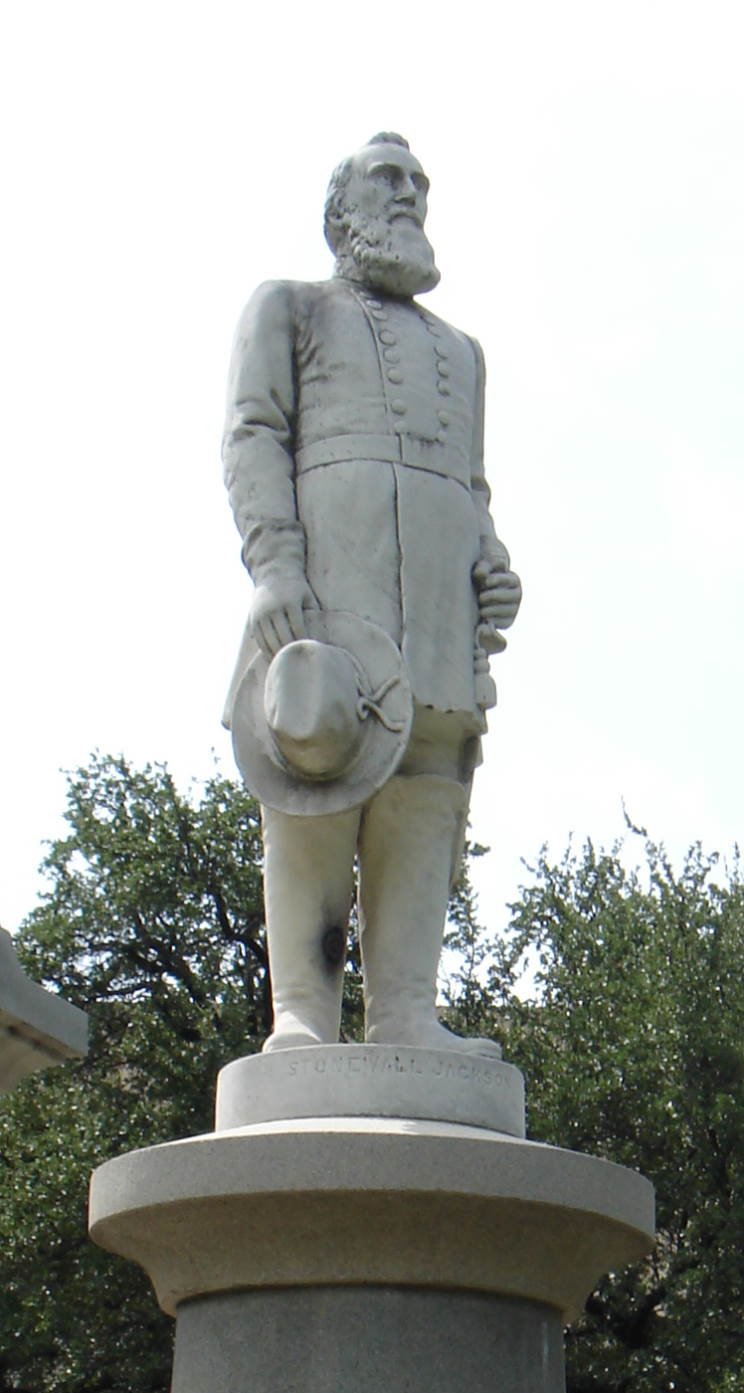 |
Close-up of the statue of General Stonewall Jackson. |
(All photos © 2017 Michael W. Pocock
and MaritimeQuest all rights reserved |
Page published Aug. 22, 2017
|